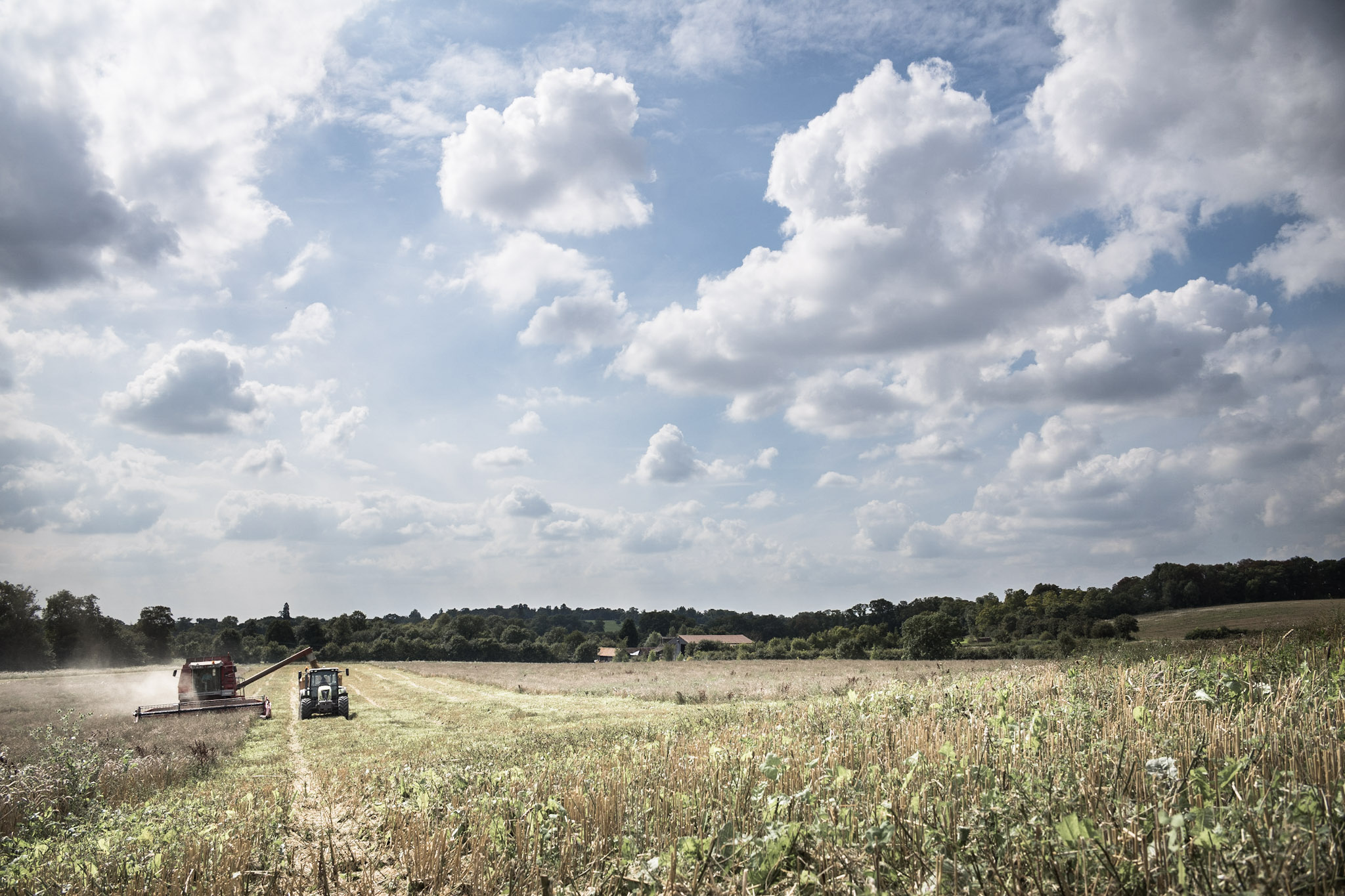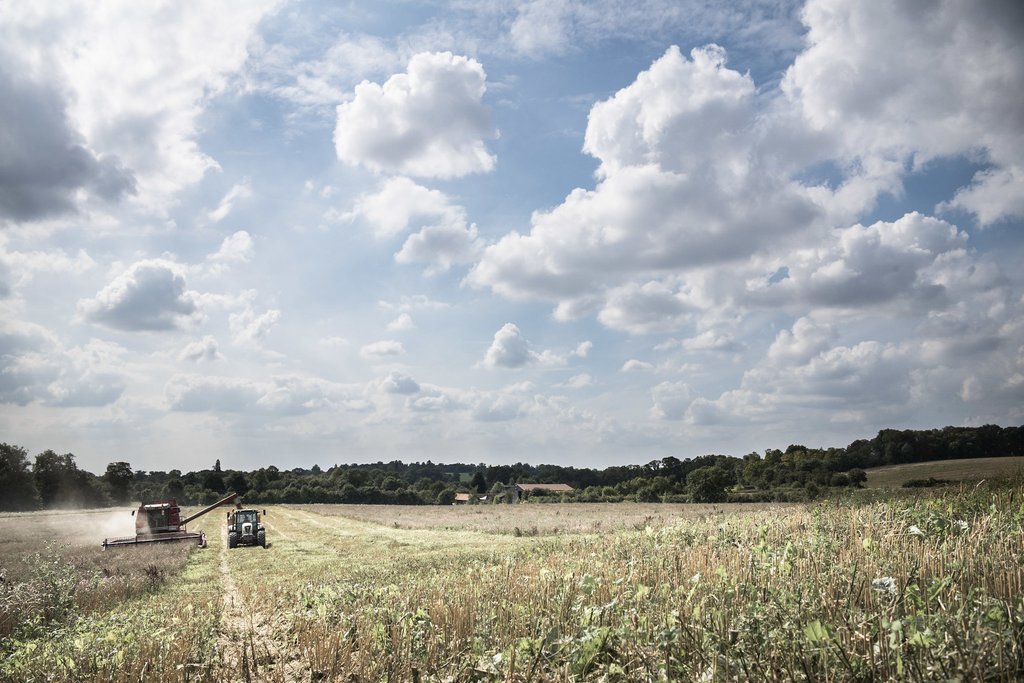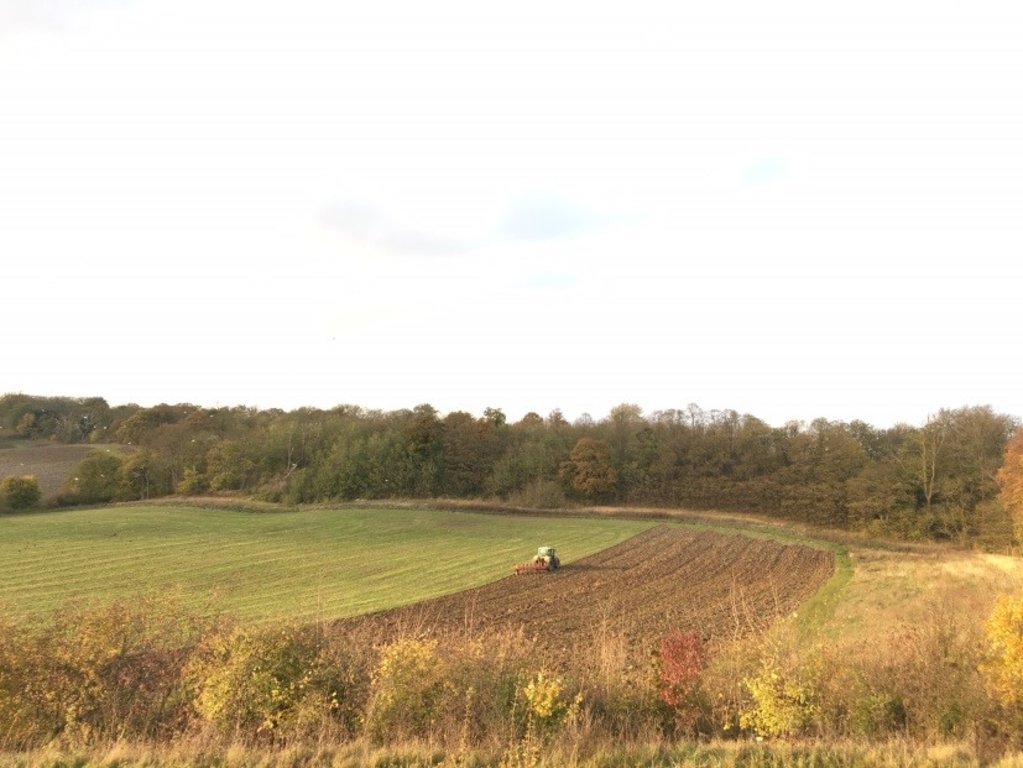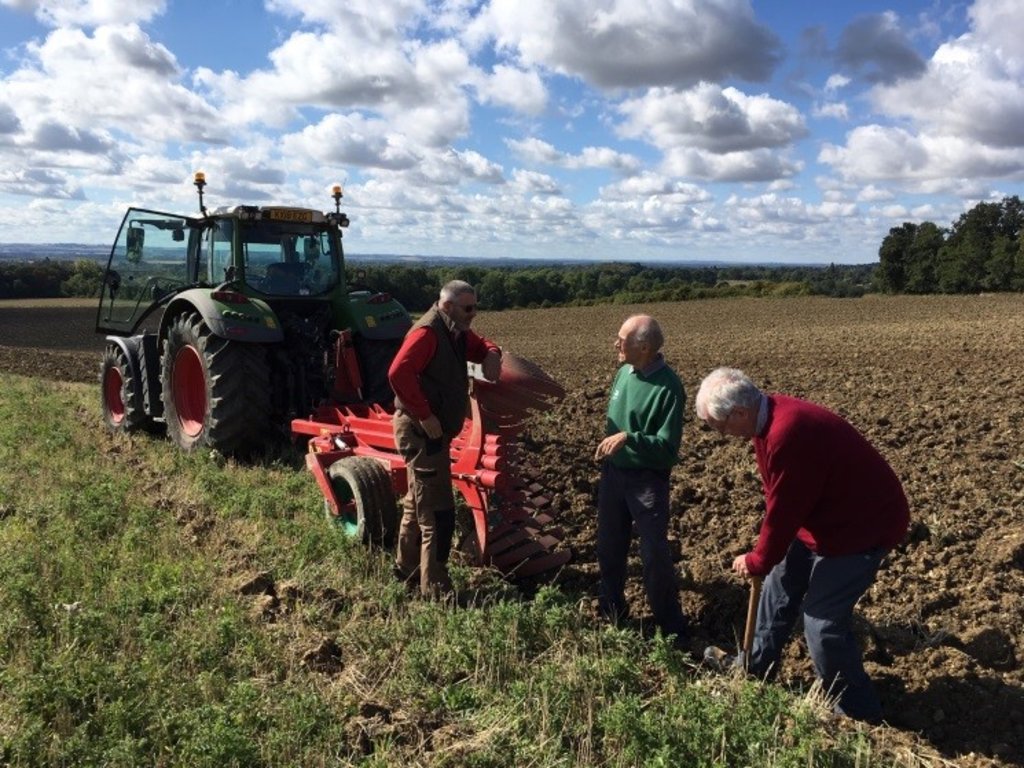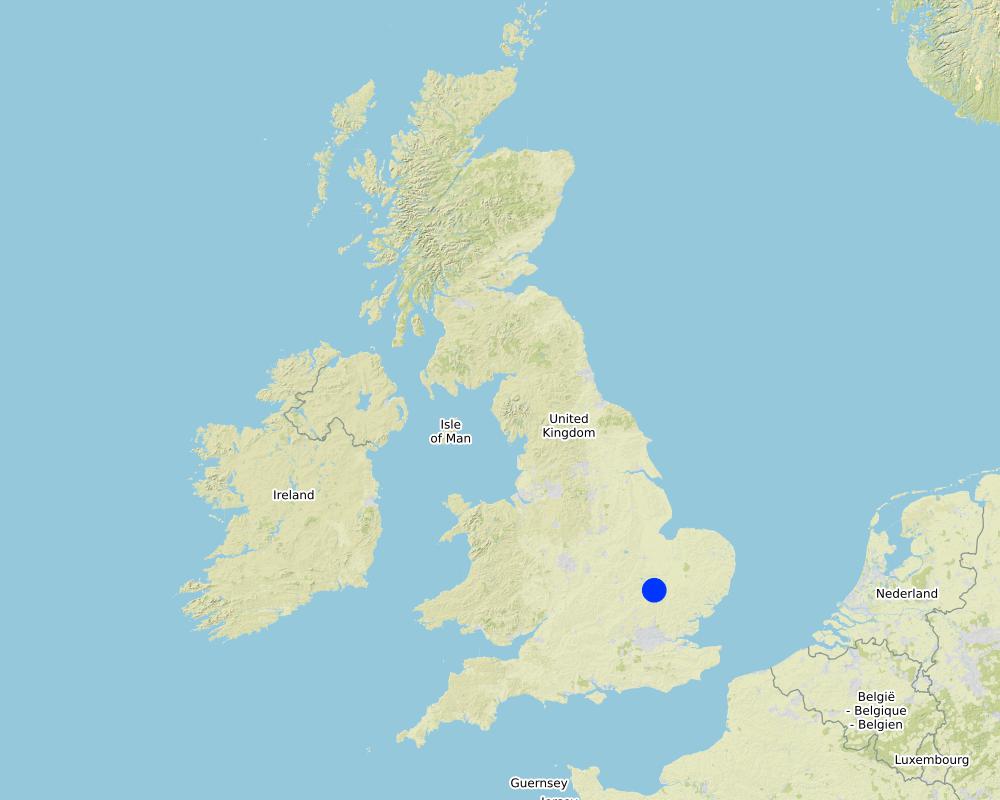Reduced tillage - Non-inversion and shallow cultivation in organic systems [United Kingdom]
- Creation:
- Update:
- Compiler: Sabine Reinsch
- Editor: David Robinson
- Reviewer: Renate Fleiner
Non-inversion and shallow cultivation in organic systems
technologies_5012 - United Kingdom
View sections
Expand all Collapse all1. General information
1.2 Contact details of resource persons and institutions involved in the assessment and documentation of the Technology
Key resource person(s)
land user:
Weir Callum
The National Trust
United Kingdom
Name of project which facilitated the documentation/ evaluation of the Technology (if relevant)
European Interreg project FABulous FarmersName of the institution(s) which facilitated the documentation/ evaluation of the Technology (if relevant)
UK Centre for Ecology & Hydrology (CEH) - United KingdomName of the institution(s) which facilitated the documentation/ evaluation of the Technology (if relevant)
The National Trust (National Trust) - United Kingdom1.3 Conditions regarding the use of data documented through WOCAT
The compiler and key resource person(s) accept the conditions regarding the use of data documented through WOCAT:
Yes
1.4 Declaration on sustainability of the described Technology
Is the Technology described here problematic with regard to land degradation, so that it cannot be declared a sustainable land management technology?
No
2. Description of the SLM Technology
2.1 Short description of the Technology
Definition of the Technology:
Non-inversion and ‘shallow’ ploughing cultivation strategies on an organic farm, where the use of herbicides for weed control is prohibited.
2.2 Detailed description of the Technology
Description:
The shallow plough is used on land dominated by clay soils at an organically farmed estate, south of Cambridgeshire, UK. Previously, ‘conventional’ ploughs were used, which plough deeper than a shallow plough. However, ploughing deeper would often bring large chunks of raw clay from the subsoil to the surface. This would quickly solidify, locally referred as when the soil turns to ‘concrete’. Numerous cultivations were then required to reduce these ‘concrete’ soil chunks into a seed bed. It was a laborious, expensive task which sacrificed soil health to produce a less than satisfactory result. However, the farm still required a plough of some form as a means of weed control through inversion. As it is an organic estate, chemical sprays could not be used. A shallow plough was invested in as a way of striking the balance between overcoming the problems of creating a seedbed, but also maintaining the weed control benefits of inversion tillage. It has been very successful in reducing the input requirements, and at the same time increasing the quality of the output. Whilst shallow ploughing has challenges, such as full inversion of weeds in very dry conditions, on balance it is much better for the farming business than the previous alternative. We are able to do less damage to soil, and increase outputs which is important due to agricultural labour scarcity and smaller weather windows due to climate change.
Reduced tillage options have been a challenge to combat in organic systems where herbicides are prohibited. As such, trials of reduced tillage options have been explored. These include;
1)Non-inversion tillage where no ploughing is done and soil is cultivated to the first 100 mm.
2)Shallow ploughing where a specifically designed plough inverts soil to a depth of 125 mm, as opposed to traditional plough depths of 200 mm.
The purpose of this technology is to minimise soil disturbance to enhance the soil structure, biology and chemistry, whilst creating a seed bed and controlling weeds. The challenge on the specific site is there has been a history of annual plough, which has led to the proliferation of weeds that thrive on such systems. These include creeping thistle and common docks. As such, there was also the purpose of ‘disrupting’ the existing system in order to control these weeds. The only specific input required was a shallow plough, designed to invert soil from lower depths. For non-inversion tillage, a subsoiler and disc cultivator were used. The non-inversion tillage was done at two sites; one cereal stubble and one out of a fertility building two-year grass and clover ley.
Benefits/impacts/things land owners did/did not like:
Non-inversion tillage:
-Instead of ploughing, non-inversion tillage from the fertility ley allowed us to keep the soil structure from 2 years of grass/clover intact and in the right soil profile. We weren’t burying the friable, high-nutrient and porous top soil 200 mm under the ground and we weren’t lifting heavy, lower-aerobic soil to the surface where we wanted to plant.
-This meant that plants established quicker and we were able to drill later, despite the fields being very heavy, poorly drained fields.
-Weeds were killed, primarily through timely cultivations during a hot-spell, so that the cultivator brought roots to the surface to dry them.
-Drainage was evident after drilling as we were able to graze sheep on the wheat in March.
-Crops have tillered well and responded to nutrients.
-Establishment costs were approximately £30/ha cheaper.
-However, non-inversion tillage in cereal stubbles has not been as successful due to weed control, and whether the cheaper costs outweighs the weed burden remains to be assessed. The reason for this is not being able to cultivate during the hot weather (as this came before harvest).
-In addition, in cereal stubbles, we have seen less creeping thistles and docks, but more wild oats and cereal volunteers.
Shallow ploughing:
-Cheaper establishment costs through lower diesel usage (yet to be quantified).
-Better in many circumstances of inverting soil completely, but from a much lower depth.
-Did not bring up any large clumps of sub-soil which the conventional plough would. These result in much cultivations to break the clumps down.
-Ploughing ‘on-land’ meant that there was no smearing in the furrow from tyres.
-Lower HP requirement – 180 hp tractor ploughing 3.2 m to 125 mm on heavy land.
-Ploughing left over-winter did not require more than one cultivation before drilling as ploughed soil was friable from lower plough depth.
-That being said, there were favourable ploughing conditions in 2018. Regardless, we have sold our conventional plough because we like the shallow plough so much.
General benefits are:
-Reduced, prevented or restored land degradation
-Improved/preserved biodiversity
-Increased adaptation/resilience to climate change/extremes and its impacts
-A potential beneficial economic impact
The compilation of this SLM is a part of the European Interreg project FABulous Farmers which aims to reduce the reliance on external inputs by encouraging the use of methods and interventions that increase the farm’s Functional AgroBiodiversity (FAB). Visit www.fabulousfarmers.eu and www.nweurope.eu/Fabulous-Farmers for more information.
2.3 Photos of the Technology
2.5 Country/ region/ locations where the Technology has been applied and which are covered by this assessment
Country:
United Kingdom
Further specification of location:
Wimpole Estate
Specify the spread of the Technology:
- evenly spread over an area
If the Technology is evenly spread over an area, specify area covered (in km2):
4.0
If precise area is not known, indicate approximate area covered:
- 1-10 km2
Is/are the technology site(s) located in a permanently protected area?
No
Map
×2.6 Date of implementation
Indicate year of implementation:
2018
If precise year is not known, indicate approximate date:
- less than 10 years ago (recently)
2.7 Introduction of the Technology
Specify how the Technology was introduced:
- through land users' innovation
Comments (type of project, etc.):
Hosted on a demonstration farm, so able to take more risks. The ideas were adapted from other farmer’s ideas. Some of these principles have not been tried much in organic systems, which is why they are unique. However, they are becoming more commonplace in conventional systems.
3. Classification of the SLM Technology
3.1 Main purpose(s) of the Technology
- reduce, prevent, restore land degradation
- preserve/ improve biodiversity
- adapt to climate change/ extremes and its impacts
- mitigate climate change and its impacts
- create beneficial economic impact
3.2 Current land use type(s) where the Technology is applied
Land use mixed within the same land unit:
No

Cropland
- Annual cropping
Annual cropping - Specify crops:
- cereals - other
- fodder crops - clover
- fodder crops - grasses
Number of growing seasons per year:
- 1
Is intercropping practiced?
Yes
Is crop rotation practiced?
No
3.3 Has land use changed due to the implementation of the Technology?
Has land use changed due to the implementation of the Technology?
- No (Continue with question 3.4)
Land use mixed within the same land unit:
No
3.4 Water supply
Water supply for the land on which the Technology is applied:
- rainfed
3.5 SLM group to which the Technology belongs
- minimal soil disturbance
- integrated soil fertility management
- water diversion and drainage
3.6 SLM measures comprising the Technology

agronomic measures
- A3: Soil surface treatment
- A5: Seed management, improved varieties
A3: Differentiate tillage systems:
A 3.2: Reduced tillage (> 30% soil cover)
3.7 Main types of land degradation addressed by the Technology

soil erosion by wind
- Et: loss of topsoil

chemical soil deterioration
- Cn: fertility decline and reduced organic matter content (not caused by erosion)

physical soil deterioration
- Pc: compaction

biological degradation
- Bs: quality and species composition/ diversity decline
- Bp: increase of pests/ diseases, loss of predators

water degradation
- Hs: change in quantity of surface water
- Hg: change in groundwater/aquifer level
- Hq: decline of groundwater quality
- Hw: reduction of the buffering capacity of wetland areas
3.8 Prevention, reduction, or restoration of land degradation
Specify the goal of the Technology with regard to land degradation:
- prevent land degradation
- reduce land degradation
4. Technical specifications, implementation activities, inputs, and costs
4.2 General information regarding the calculation of inputs and costs
Specify how costs and inputs were calculated:
- per Technology area
Indicate size and area unit:
4 ha
If using a local area unit, indicate conversion factor to one hectare (e.g. 1 ha = 2.47 acres): 1 ha =:
Approx. £45/ha – about 25% less than ‘deep ploughing’
other/ national currency (specify):
GBP
If relevant, indicate exchange rate from USD to local currency (e.g. 1 USD = 79.9 Brazilian Real): 1 USD =:
0.82
Indicate average wage cost of hired labour per day:
£90
4.3 Establishment activities
| Activity | Timing (season) | |
|---|---|---|
| 1. | Use of shallow plough | After harvest |
4.4 Costs and inputs needed for establishment
| Specify input | Unit | Quantity | Costs per Unit | Total costs per input | % of costs borne by land users | |
|---|---|---|---|---|---|---|
| Labour | Person per day | person day | 1.0 | 90.0 | 90.0 | 100.0 |
| Equipment | Ovlac Shallow Plough (7+1f) (one off) | 1 | 1.0 | 11000.0 | 11000.0 | 100.0 |
| Equipment | Tractor | per day | 1.0 | 180.0 | 180.0 | 100.0 |
| Other | Diesel (120 litres per day) | ltrs per day | 1.0 | 60.0 | 60.0 | 100.0 |
| Total costs for establishment of the Technology | 11330.0 | |||||
| Total costs for establishment of the Technology in USD | 13817.07 | |||||
4.5 Maintenance/ recurrent activities
| Activity | Timing/ frequency | |
|---|---|---|
| 1. | Grease plough | once per week |
| 2. | change plough points | once per season |
4.7 Most important factors affecting the costs
Describe the most determinate factors affecting the costs:
Most important factors affecting cost are decreased time spent ploughing and lower diesel cost, reducing establishment costs by £15 per ha.
5. Natural and human environment
5.1 Climate
Annual rainfall
- < 250 mm
- 251-500 mm
- 501-750 mm
- 751-1,000 mm
- 1,001-1,500 mm
- 1,501-2,000 mm
- 2,001-3,000 mm
- 3,001-4,000 mm
- > 4,000 mm
Specifications/ comments on rainfall:
Highest rainfall month is August, which is important as this is when cultivations need to occur. As non-inversion and shallow ploughing are faster operations, this means that cultivations can occur at more optimum times.
Agro-climatic zone
- sub-humid
5.2 Topography
Slopes on average:
- flat (0-2%)
- gentle (3-5%)
- moderate (6-10%)
- rolling (11-15%)
- hilly (16-30%)
- steep (31-60%)
- very steep (>60%)
Landforms:
- plateau/plains
- ridges
- mountain slopes
- hill slopes
- footslopes
- valley floors
Altitudinal zone:
- 0-100 m a.s.l.
- 101-500 m a.s.l.
- 501-1,000 m a.s.l.
- 1,001-1,500 m a.s.l.
- 1,501-2,000 m a.s.l.
- 2,001-2,500 m a.s.l.
- 2,501-3,000 m a.s.l.
- 3,001-4,000 m a.s.l.
- > 4,000 m a.s.l.
Indicate if the Technology is specifically applied in:
- not relevant
5.3 Soils
Soil depth on average:
- very shallow (0-20 cm)
- shallow (21-50 cm)
- moderately deep (51-80 cm)
- deep (81-120 cm)
- very deep (> 120 cm)
Soil texture (topsoil):
- fine/ heavy (clay)
Soil texture (> 20 cm below surface):
- fine/ heavy (clay)
Topsoil organic matter:
- high (>3%)
If available, attach full soil description or specify the available information, e.g. soil type, soil PH/ acidity, Cation Exchange Capacity, nitrogen, salinity etc.
Gault clay/Hanslope clay, pH 7.5
5.4 Water availability and quality
Ground water table:
< 5 m
Availability of surface water:
medium
Water quality refers to:
both ground and surface water
Is water salinity a problem?
No
Is flooding of the area occurring?
No
5.5 Biodiversity
Species diversity:
- high
Habitat diversity:
- high
5.6 Characteristics of land users applying the Technology
Sedentary or nomadic:
- Sedentary
Market orientation of production system:
- commercial/ market
Off-farm income:
- less than 10% of all income
Relative level of wealth:
- average
Individuals or groups:
- individual/ household
Level of mechanization:
- mechanized/ motorized
Gender:
- men
Age of land users:
- middle-aged
- elderly
5.7 Average area of land used by land users applying the Technology
- < 0.5 ha
- 0.5-1 ha
- 1-2 ha
- 2-5 ha
- 5-15 ha
- 15-50 ha
- 50-100 ha
- 100-500 ha
- 500-1,000 ha
- 1,000-10,000 ha
- > 10,000 ha
Is this considered small-, medium- or large-scale (referring to local context)?
- medium-scale
5.8 Land ownership, land use rights, and water use rights
Land ownership:
- individual, titled
Land use rights:
- leased
- individual
Are land use rights based on a traditional legal system?
Yes
5.9 Access to services and infrastructure
health:
- poor
- moderate
- good
education:
- poor
- moderate
- good
technical assistance:
- poor
- moderate
- good
employment (e.g. off-farm):
- poor
- moderate
- good
markets:
- poor
- moderate
- good
energy:
- poor
- moderate
- good
roads and transport:
- poor
- moderate
- good
drinking water and sanitation:
- poor
- moderate
- good
financial services:
- poor
- moderate
- good
6. Impacts and concluding statements
6.1 On-site impacts the Technology has shown
Socio-economic impacts
Production
crop production
crop quality
fodder production
Comments/ specify:
Crop quality before SLM not able to handle grazing, but now can graze so large increase in fodder/animal production compared to previous model
animal production
Comments/ specify:
Crop quality before SLM not able to handle grazing, but now can graze so large increase in fodder/animal production compared to previous model
land management
Income and costs
expenses on agricultural inputs
farm income
diversity of income sources
workload
Other socio-economic impacts
work/life balance
Socio-cultural impacts
recreational opportunities
SLM/ land degradation knowledge
Ecological impacts
Water cycle/ runoff
harvesting/ collection of water
surface runoff
excess water drainage
Soil
soil moisture
soil cover
soil loss
soil crusting/ sealing
soil compaction
nutrient cycling/ recharge
soil organic matter/ below ground C
Biodiversity: vegetation, animals
Vegetation cover
biomass/ above ground C
invasive alien species
animal diversity
beneficial species
pest/ disease control
Comments/ specify:
A small decrease in disease control with shallow ploughing is not as effective as inverting with a conventional plough. This is because less of the stubble from the previous crop would be inverted, creating a greater chance of disease carryover, for example Septoria nodorum blotch.
Climate and disaster risk reduction
flood impacts
drought impacts
6.2 Off-site impacts the Technology has shown
reliable and stable stream flows in dry season
downstream flooding
downstream siltation
groundwater/ river pollution
buffering/ filtering capacity
wind transported sediments
impact of greenhouse gases
6.3 Exposure and sensitivity of the Technology to gradual climate change and climate-related extremes/ disasters (as perceived by land users)
Gradual climate change
Gradual climate change
| Season | increase or decrease | How does the Technology cope with it? | |
|---|---|---|---|
| annual temperature | increase | well | |
| seasonal temperature | spring | increase | well |
| annual rainfall | decrease | moderately | |
| seasonal rainfall | spring | decrease | well |
Climate-related extremes (disasters)
Meteorological disasters
| How does the Technology cope with it? | |
|---|---|
| local rainstorm | moderately |
| local thunderstorm | moderately |
Climatological disasters
| How does the Technology cope with it? | |
|---|---|
| heatwave | moderately |
| drought | moderately |
Other climate-related consequences
Other climate-related consequences
| How does the Technology cope with it? | |
|---|---|
| extended growing period | well |
| reduced growing period | well |
6.4 Cost-benefit analysis
How do the benefits compare with the establishment costs (from land users’ perspective)?
Short-term returns:
slightly positive
Long-term returns:
positive
How do the benefits compare with the maintenance/ recurrent costs (from land users' perspective)?
Short-term returns:
neutral/ balanced
Long-term returns:
slightly positive
6.5 Adoption of the Technology
- single cases/ experimental
Of all those who have adopted the Technology, how many did so spontaneously, i.e. without receiving any material incentives/ payments?
- 51-90%
Comments:
No govt. or private incentive for reduced tillage.
6.6 Adaptation
Has the Technology been modified recently to adapt to changing conditions?
No
6.7 Strengths/ advantages/ opportunities of the Technology
| Strengths/ advantages/ opportunities in the land user’s view |
|---|
| Cheaper establishment costs and quicker establishment time mean it will benefit the farm in the long term as labour becomes an issue (regardless of Brexit). |
| Makes soil more resilient to changing weather conditions, both drier and wetter conditions. |
| Reduced soil carbon emissions and diesel emissions from tractor. |
| Better soil structure, biology and chemistry to boost yield, plus allows us to use plough sparingly as a ‘reset’ button when we really need to. |
| However, there is a risk to yield if not used correctly. Plus, we may solve one weed issue (thistles and docks) and move to another weed issue (cereal volunteers, blackgrass and wild oats). |
6.8 Weaknesses/ disadvantages/ risks of the Technology and ways of overcoming them
| Weaknesses/ disadvantages/ risks in the land user’s view | How can they be overcome? |
|---|---|
| We may solve one weed issue (thistles and docks) and move to another weed issue (cereal volunteers, blackgrass and wild oats). |
- Use dry June/July to non-invert fertility leys, allowing plough to be used as a reset button later in the rotation. - Minimise non-inversion in cereal stubbles to cleanest crops. |
| Management demand to adapt technology to annual changes in conditions (not as easy as ploughing or spraying in any conditions – to do this, you must be adaptable). |
-Operator education -Planning |
7. References and links
7.1 Methods/ sources of information
- interviews with land users
Sharing of other ideas on twitter from other farmers.
Links and modules
Expand all Collapse allLinks
No links
Modules
No modules


